Call to Action
Ensuring public water infrastructure integrity and safety of the water that we consume is critical. Two terms that are often used interchangeably in the water safety industry, but have distinct meanings and applications, are “Cross-Connection Control” and “Backflow Prevention.” While both are crucial components of a comprehensive water safety strategy, understanding their key differences is essential for maintaining a reliable and contaminant-free water supply and ensuring consistency in communication and application. In a nutshell, the way we talk about cross-connections matters.
tilities that serve large, metropolitan populations have more resources than most water systems. But they also have more to do. Just like in rural utilities, cross-connection control can quietly fall by the wayside until it’s forgotten. By the time sanitary surveys come around, non-compliance looms, or worse, a backflow event and resulting contamination occurs.
10 Gaps in Cross-Connection Control Programs & How to Fill Them
“Cross-Connection Control and Backflow Prevention go hand in hand for truly safe water supplies to be protected from backflow contamination.”
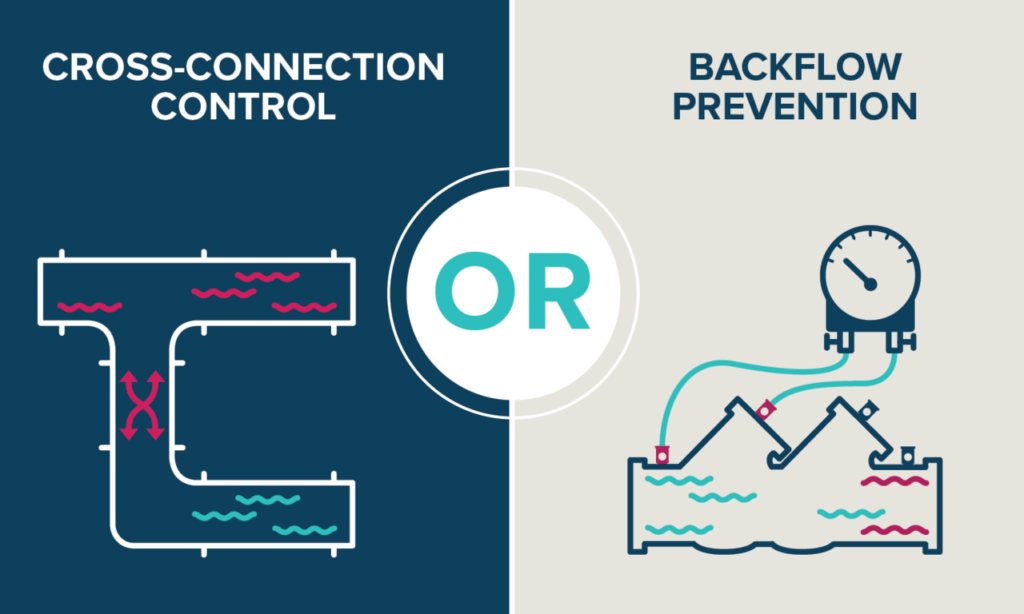
Inaccurate: “You need to install a cross-connect for the backflow.”
Accurate: “Install the backflow preventer assembly to isolate the cross-connection hazard.”
Cross-Connection Control
Cross-Connection Control refers to the practice of preventing the contamination of drinking water by isolating or removing interconnections in public water systems that could introduce pollutants or contaminants into the potable water distribution system. A cross-connection is defined by the EPA as “any actual or potential connection between the public water supply and a source of contamination or pollution.” This can happen in various settings, including residential, commercial, and industrial environments.
The key objective of Cross-Connection Control is to identify, assess, and eliminate or control cross-connections. This involves implementing a range of strategies, such as conducting regular inspections, installation of new backflow preventers to isolate cross-connections, testing backflow prevention assemblies, and corrective action enforcement to ensure compliance with related regulations and codes.
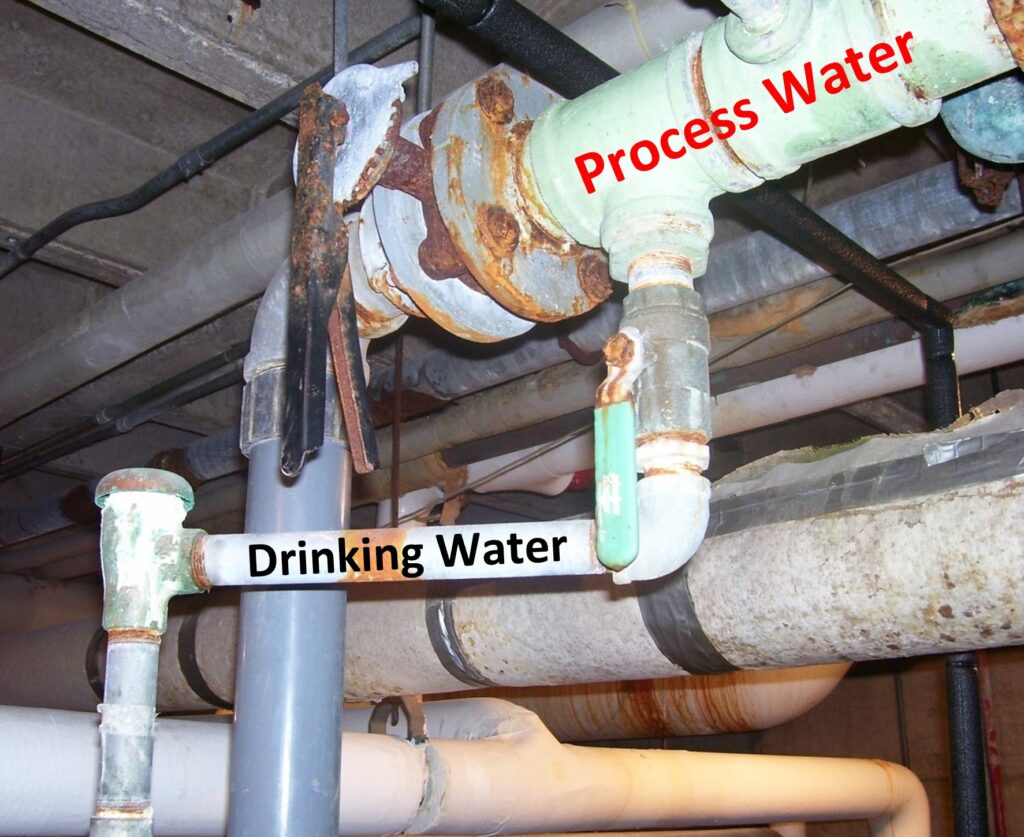
Cross-Connection Control Strategies
Inspections and Assessments:
Periodic onsite visual surveys, inspections, and assessments of potable water plumbing systems are essential to truly identify cross-connections. While many states only require public water systems to monitor and ensure backflow prevention at the facility service inlet, some states follow the AWWA published position of ensuring safe drinking water to the end-flowing-tap by required comprehensive cross-connection surveys of internal potable water facility plumbing. Trained professionals evaluate the potable water infrastructure to pinpoint areas where unprotected cross-connections could pose a threat to the safety of the public water supply. These professionals will also make recommendations or requirements for corrective actions to resolve any issues. This could include installing a backflow prevention device or assembly, introducing an air gap or other physical method of separation, or removing the interconnection altogether.
Backflow Prevention Assembly Testing:
One of the primary tools in cross-connection control is the methodic documentation and data management of backflow prevention assemblies at critical connection points. These assemblies are installed at key points in the water distribution system to prevent the reversal of water flow, typically either at each individual point of use or at the service connection as what is called a Containment Assembly. Once these assemblies are located and documented, the water purveyor typically requires the assembly to be periodically tested to ensure that the assembly is in proper working order so that the cross-connection that it is isolated remains protected.
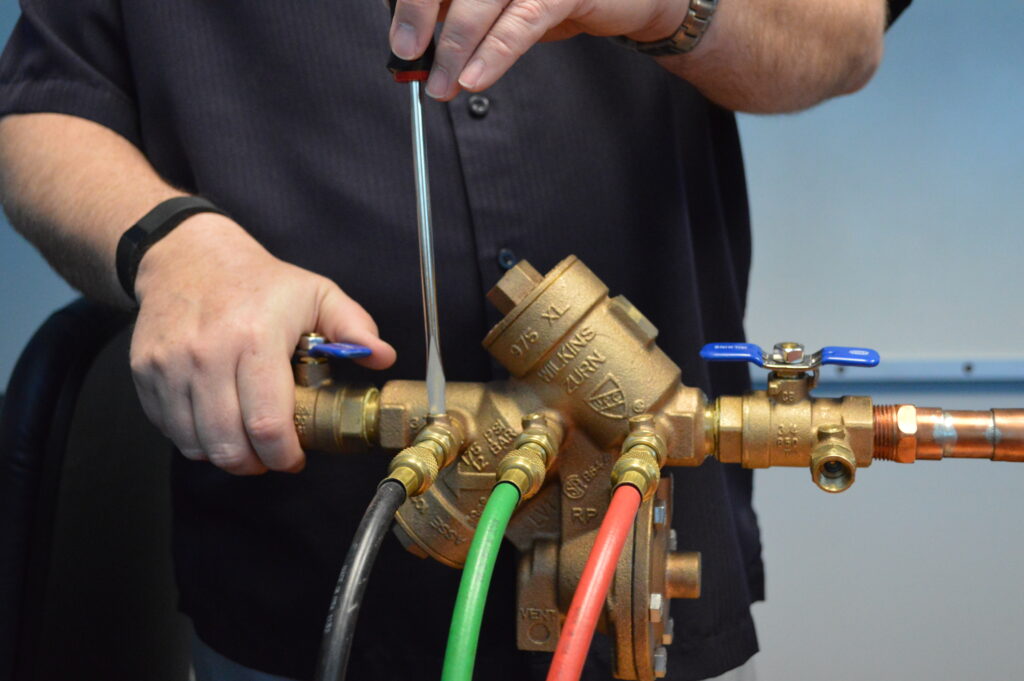
Regulations and Enforcement:
Successfully controlling cross-connections relies on regulatory framework that sets guidelines for water system safety. Surprisingly, there are no specific federal regulations relating to Cross-Connection Control. Primacy is delegated to each state for the development and implementation of related regulations. State Regulations vary greatly from state to state, with some states still having no official regulations on Cross-Connection Control. Authorities that establish ordinances and enforce them will have much more well-documented information and data on the safety of their water system. Enforcement is crucial to ensure that businesses and individuals adhere to these regulations. Building owners are responsible for code compliant and safe plumbing arrangements for potable water, and a well-rounded cross-connection control program helps communicate how building owners must participate in compliance.
Backflow Prevention
Backflow Prevention, on the other hand, is a specific aspect of Cross-Connection Control that focuses on stopping the unwanted flow of water from a non-potable source back into the potable water supply. Backflow occurs when there is a change in pressure within the water distribution system, causing water to flow in the opposite direction.
The two types of Backflow include Back Siphonage and Back Pressure; Back Siphonage is a type of Backflow where the upstream pressure or supply pressure in a piping system is reduced to a sub-atmospheric pressure. Back Pressure is a type of Backflow where the system pressure is higher than the incoming supply pressure. Preventing Backflow completely is not possible – it is an inherent hydraulic problem in all pressurized piping systems. The goal of Backflow Prevention is to stop that unwanted reversal of flow before any hazardous substances can be drawn into any potable water plumbing.
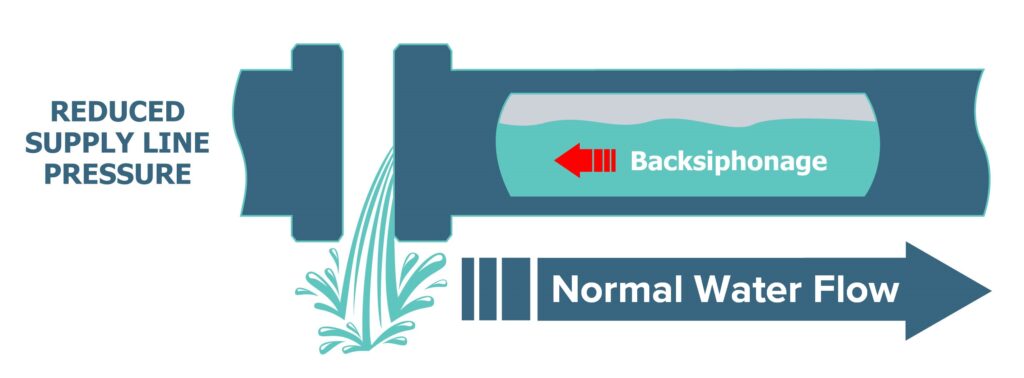
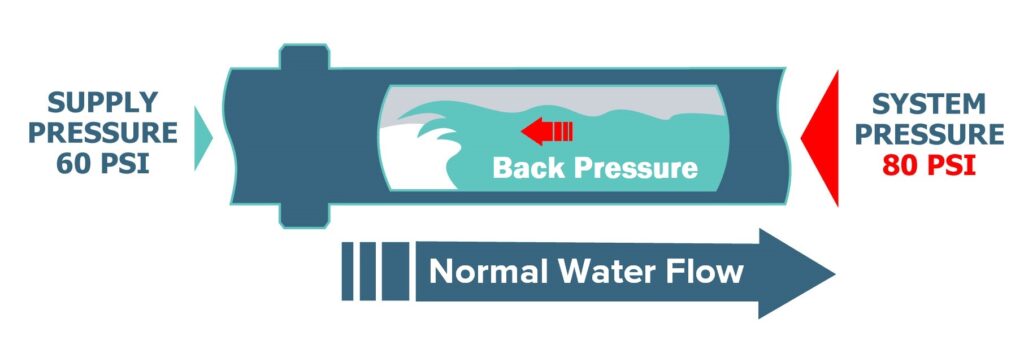
Key Differences
Differences in Scope:
Cross-Connection Control is a broader term encompassing various activities to identify and manage potential cross-connections. Backflow Prevention is a specific component of cross-connection control, focusing on preventing the unwanted reversal of water flow.
Differences in Focus:
Cross-Connection Control emphasizes the identification and elimination of potential cross-connections. Backflow Prevention specifically addresses the mechanisms and devices used to prevent the backward flow of water.
| Cross-Connection Control | Backflow Prevention |
| Regulation driven | Plumbing Code driven |
| Responsibility of Public Water System | Responsibility of facility owner/installer |
| Implemented locally by Public Water Systems | Integral to new and retro plumbing installations |
| Organized with Policy and Procedures | Requires proper installation/application/maintenance |
Conclusion
In conclusion, while Cross-Connection Control and Backflow Prevention are closely related and often used in conjunction, they serve distinct purposes within the realm of water safety. Cross-Connection Control is a comprehensive approach to identify and manage potential sources of contamination, whereas Backflow Prevention specifically targets the physical prevention of the backward flow of water.
Understanding these key differences is crucial for water authorities, plumbers, and property owners to implement effective measures that safeguard our water supply from contamination and ensure public health and safety.


